Day of the Dead: traditions of celebrating Dia de los Muertos in Mexico
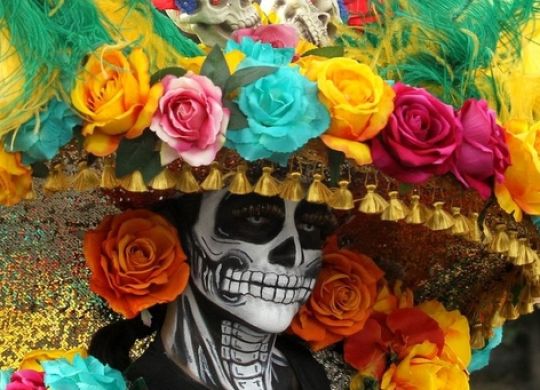
Mexicans are known worldwide for their unique attitude to life and death. It is in this country that the Day of the Dead is celebrated annually, when people honor the memory of their deceased loved ones with loud celebrations. Learn more about the history, symbols, and traditions of Dia de los Muertos in Mexico
Mexico is known for its special attitude to death and life, which is expressed in the celebration of Día de los Muertos, or Day of the Dead. It is an ancient and profound holiday dedicated to the memory of loved ones who have passed away. Unlike many cultures, where death evokes sadness and mourning, Mexicans approach it from a different perspective, honoring the dead through a celebration that intertwines joy, memories, and nostalgia.
Día de los Muertos originated more than a thousand years ago among indigenous peoples such as the Toltecs and Aztecs. They believed that the spirits of the dead returned to earth every year. With the arrival of the Spaniards, elements of Catholic traditions were added to this holiday. Today, this holiday has become so significant for Mexican culture that UNESCO has recognized it as part of the cultural heritage of mankind. According to statistics, most tourists come to Mexico to celebrate the Day of the Dead from Canada, the United States, Colombia, and Brazil.
Each region of Mexico celebrates Día de los Muertos in its own way, but the general idea and traditions remain common to the whole country: families come together to honor their ancestors, treat them to traditional dishes, sing songs and create altars with photos and favorite things of the dead.
Visit World has created a detailed guide for you with all the features and history of the Day of the Dead. Stay with us and immerse yourself in the colorful traditions of incomparable Mexico!
You can learn more about the secrets of the impressive Italian reserve Cinque Terre by following the link.
What is Dia de los Muertos?
The Day of the Dead, known in Spanish as Día de los Muertos, is a traditional Mexican holiday during which families honor the memory of their deceased loved ones. It is believed that at this time spirits return to the world of the living. The celebration of this day is widespread mainly in Mexico, but it is also celebrated in some other Spanish-speaking countries and in regions with a significant Mexican diaspora.
The holiday falls in late October and early November and is closely related to the Catholic All Saints' Day, which is celebrated on the same dates. Although preparations for the holiday and some celebrations can begin as early as mid-October, the main events take place on November 1 and 2.
The first day, November 1, is dedicated to deceased children and is called Día de los Inocentes (Day of the Innocents) or Día de los Angelitos (Day of the Little Angels). The second day, November 2, is celebrated in honor of adults and is called Día de los Muertos or Día de los Difuntos (Day of the Dead). These days have merged with Catholic holidays, such as All Saints' Day and All Souls' Day, when people traditionally pray for the dead.
Despite regional differences, it is common to all that Mexicans gather at cemeteries to decorate the graves of their loved ones with flowers and candles and often spend time there with family and friends. The atmosphere of the holiday, although steeped in reverence, remains joyful, as it is a time when the living and the dead can “meet” again. People bring food, drinks, and sometimes even invite musicians to play the favorite songs of the dead, keeping in touch with the spirits through a shared celebration.
The origin of the Day of the Dead
The Día de los Muertos holiday has deep roots that go back about three thousand years and stem from rituals honoring the dead in pre-Columbian Mesoamerica. The Aztecs and other peoples of central Mexico perceived the universe as a cycle in which death was an integral part of life. They believed that after death, the human soul went to Chicunamictlan, the Land of the Dead. Only after overcoming nine difficult levels, which took many years, could the soul find its final resting place in Miktlan.
Death did not cause fear or grief among the indigenous people; they perceived it as a natural stage of the life cycle. In memory of the dead, they created makeshift altars on which they left sacrifices to help souls on their journey through the afterlife.
Traditions of celebrating the Day of the Dead in Mexico
These days, locals create offrendas - home altars that are decorated with flowers, photos, sugar skulls, and favorite foods and drinks of those who are honored. Particularly popular are marigolds, which symbolize the roads that lead the souls of the dead to their altars. These flowers, known as Flor de Muerto (“Flower of the Dead”), symbolize the beauty and fragility of life.
The holiday takes place in three stages: first, the souls of children are honored, then adults, and finally all the dead are remembered. At this time, Mexicans gather in cemeteries, decorate graves, and spend time with the souls of the dead. Houses and cemeteries are decorated with ribbons, candles, and flowers so that the spirits can find their way to their native places.
One of the most important attributes of the holiday is the parades in which people of all ages participate, often in costumes and with makeup depicting skeletons. Particularly popular is the image of Katrina, a female skeleton that has become a symbol of Día de los Muertos.
During the celebration, black humor is often used, and relatives recall funny stories from the lives of the dead. During this time, Mexicans also prepare special dishes, such as bread of the dead, and offer favorite drinks of the deceased, such as tequila or beer. All of this is done to encourage the souls of the dead to return to the world of the living and spend time with their families on this special day.
Planning a trip or move abroad? An important part of a successful trip is an insurance policy, as it guarantees high-quality medical care anywhere in the world and can protect you from unnecessary expenses while travelling. You can buy insurance from trusted agents on the Visit World portal.
Katrina is a symbol of the Day of the Dead
Katrina, or Katrina's Skull (in Spanish - La Calavera de la Catrina), is a famous engraving created by Mexican artist Jose Guadalupe Posada in 1913. This work is part of a series of humorous depictions of skeletons known as “calaveras” (Spanish for “skull”).
Katrina's first sketch was created around 1910 and was satirical in nature. It ridiculed the obsessive European fashion and culture that the then Mexican president Porfirio Diaz was trying to introduce. This illustration criticized the corruption of the Diaz regime, which led to the Mexican Revolution of 1911. The original title of the sketch, La Calavera Garbancera, alluded to women who were abandoning their Mexican culture and adopting European aesthetics. Subsequently, the image of Katrina became a symbol of Mexican culture and the celebration of the Day of the Dead, personifying the spirits that return to the world of the living.
Today, La Katrina is an important element of Mexican celebrations. Her image can be seen on papier-mâché decorations, sugar turtles for offrendas, and various signs and colored banners (papel picado) that adorn the streets of cities. During the parades, many people paint their faces in the shape of skulls and dress in traditional costumes or Victorian-era outfits, adding even more color to the holiday atmosphere.
Large-scale celebrations on the Day of the Dead in Mexico
Día de los Muertos is not only a family holiday but also a large-scale national celebration that covers the whole of Mexico. From cemetery processions and parades in cities to colorful street fairs with numerous food vendors and neon attractions, this holiday immerses everyone in the world of living traditions and memory.
Several key events are worth highlighting. Mexico City hosts the grand Parade of the Spirit Guides (Desfile de Alebrijes), where fantastic creatures and colorful platforms fill the streets of the capital, and thousands of people dressed as skeletons join the celebration.
In the southeast of Mexico City, in the town of Mixiquico, during the three nights of La Alumbrada (Illumination), the cemetery is immersed in the light of thousands of candles illuminating intricately decorated graves.
On the island of Sanicio in Michoacán, the celebration begins with the arrival of canoes covered in flowers and candles, creating a special atmosphere during the nightly commemoration at the local cemetery.
Oaxaca turns into a week of festivities with dancing, music and competitions for the best altar, and in Mérida, more than 50 thousand people take part in the Procession of Souls (Paseo de las Ánimas), walking two miles from the main cemetery to the city center, carrying the spirit of the holiday with them.
Culinary traditions on Día de los Muertos
Food is an important part of Día de los Muertos celebrations. At fairs in different parts of Mexico, you can find dishes that not only symbolize the favorite food of the dead, but also represent the richness of regional cuisine. For example, in Oaxaca, you can taste mole negro, a thick sauce made with chili, chocolate, onions, and garlic, usually served with chicken. In Mexico City, pozole is a traditional Mexican stew that includes cabbage, chili, onions, garlic, radishes, avocado, and salsa. And in Yucatán, they traditionally cook calabaza en tacha, a candied pumpkin cooked in sugar cane syrup.
However, one dish that is a constant part of the celebration across the country is pan de muerto, or bread of the dead. This soft, egg-based bread, sprinkled with sugar, is round and decorated with bones to symbolize the cycle of life and death. Pan de muerto is sold a few weeks before the holiday and is used not only as a treat at offrendas, but also as a delicious dessert that goes perfectly with coffee, hot cocoa or atole, a traditional hot corn-based drink.
We remind you! Do you think that the Netherlands and a tropical paradise climate are incompatible? We are in a hurry to surprise you, because the Dutch ABC overseas islands are waiting for tourists all year round. Read more about the tropical Antilles in the Caribbean.
Are you planning to travel or move abroad? An important component of a successful trip is a travel insurance policy, because it guarantees the provision of high-quality medical care in any corner of the world and is able to protect you from unnecessary expenses during the trip. You can buy insurance from verified agents on the Visit World portal.
Products from Visit World for a comfortable trip:
Travel guide for 200 countries;
Legal advice from a local specialist on visa and migration issues;
Travel insurance around the world (please select the country of interest and citizenship to receive services);
Medical insurance all over the world.
We monitor the accuracy and relevance of our information, so if you notice any errors or inconsistencies, please contact our hotline.
Recommended articles
2 min
Travels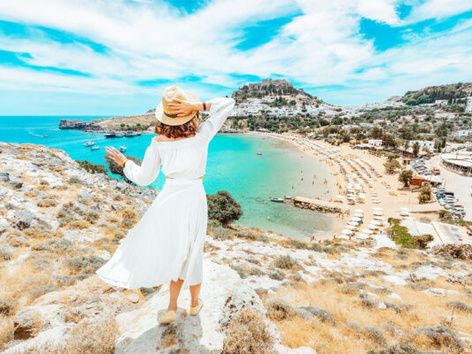
Summer 2024: budget destinations for beach holidays in Europe (updated)
Have you already started planning your summer vacation? We have prepared for you a rating of the most budget-friendly beach vacation destinations in Europe in 2024. Find out more about the places on this list
04 Aug. 2024
More details3 min
Travels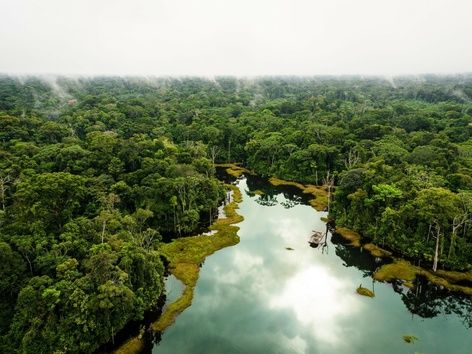
The safest countries in Latin America in 2025: a detailed overview
If you are always looking for new travel experiences, Latin America should definitely be on your bucket list. Thanks to its rich cultural heritage, stunning natural beauty, and colourful cuisine, this continent attracts millions of tourists from all over the world. However, safety is the most important criterion when choosing a travel destination. Find out more about the safest countries in South America
12 Jul. 2025
More details3 min
Travels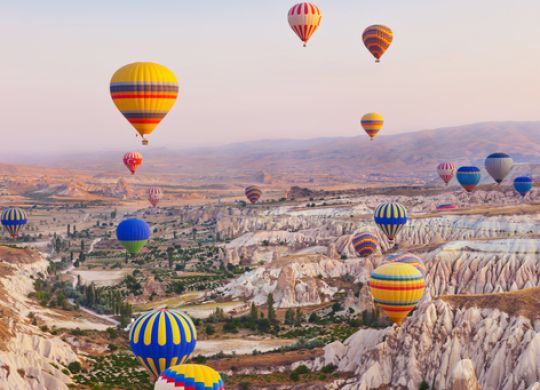
Cappadocia Travel Guide: what to see, when to go and where to stay
Cappadocia is a bizarre fantasy of nature itself, which will surprise every tourist with a scattering of valleys, stone mushrooms and fantastic caves. Find out more about the most famous sights and the best hotels in the region in our new Cappadocia travel guide
11 Aug. 2024
More details3 min
Events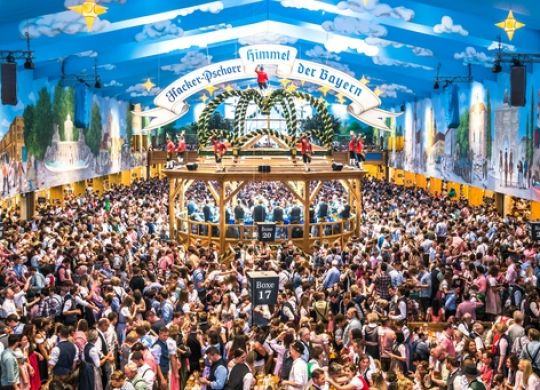
Munich Oktoberfest 2025: history and program of the festival, tents and other important details
Every year, Munich hosts the largest beer festival in the world at the end of September, attracting more than 6 million tourists. Find out more about the schedule, tents, and program of the Oktoberfest 2025
30 Aug. 2025
More detailsAll materials and articles are owned by VisitWorld.Today and are protected by international intellectual property regulations. When using materials, approval from VisitWorld.Today is required.
